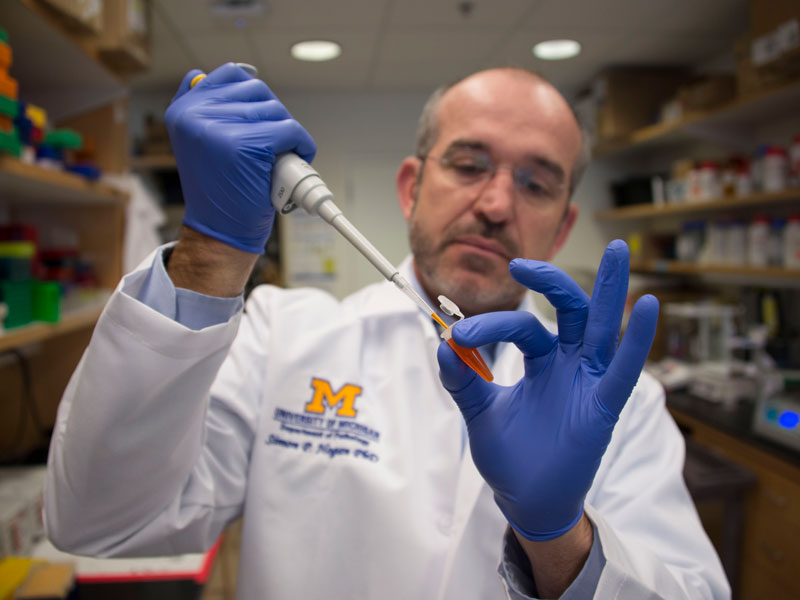What area of food allergy are you currently investigating?
Our focus is to better understand the immunological processes that contribute to severity of food-induced anaphylaxis. Currently, there are blood tests available to predict whether you may have a reaction to a specific food; however, there is no test available to predict with accuracy the severity of your reaction to that food. If we better understood the underlying processes that contribute to severity of food-induced anaphylaxis, we could design and develop a blood test to predict the severity of the reaction, and also design and develop ways to prevent a severe reaction from occurring in the first place.
Why are you passionate about this area of research?
Initially, it was the scientific intrigue of understanding the immune pathways that underlie food allergic reactions. However, over the years I have had the opportunity to meet with many families and children who are impacted by this disease, and heard of their daily struggles related to what foods they can and cannot eat, and the psychological and social challenges wrapped around accidental exposure and lifestyle. These challenges in a world where there’s no FDA-approved therapy for food allergy I felt were unacceptable and highlighted the real urgency for better understanding of food allergies. It is my belief that with this knowledge we will be able to develop targeted therapies for food allergy and change the outcome for food allergy sufferers.
Why is this area of research important to the field of food allergy?
One big concern for food allergic sufferers is accidental exposure. Food allergy sufferers are constantly concerned about what will be the context of the environment and accessibility to treatment in the event of an accidental exposure. If we are able to develop therapeutics that may not necessarily prevent a food allergic reaction, per se, but could prevent a severe life-threatening reaction from occurring after accidental exposure, we believe this would provide significant comfort for families of food allergy sufferers and enable them to life a fulfilling life.
Secondly, a good number of emerging therapies (oral immunotherapy-OIT) are based around exposure to the allergic foods. One of the concerns associated with this type of therapeutic approach, whereby an individual is exposed to the eliciting food, is the induction of a food-allergic reaction. Many food allergy individuals suffer from anxiety and apprehension in utilizing these effective therapies because of the possibility of having a reaction. It is our belief that the development of therapeutics that could prevent a severe reaction may be used as adjunctive therapy with the eliciting food during OIT that could alleviate concerns and the anxiety about having a severe reaction during treatment.
What results have you found so far?
We recently have been able to identify several immune mediators that seem to modify the severity of food-induced anaphylaxis. We have been able to show in these experimental systems that blocking the function of these immune mediators reduces the severity of a food-induced anaphylactic reaction.

